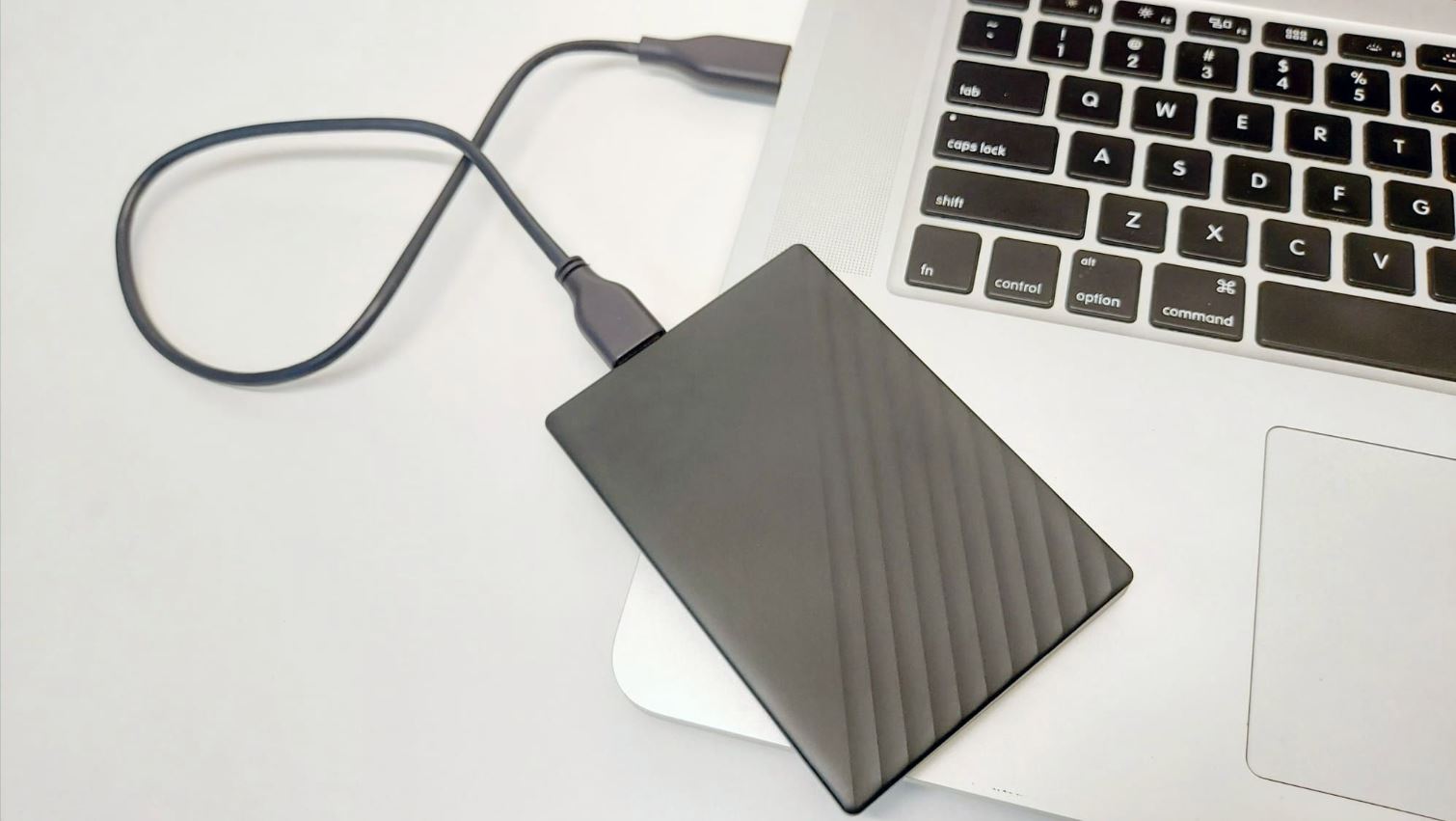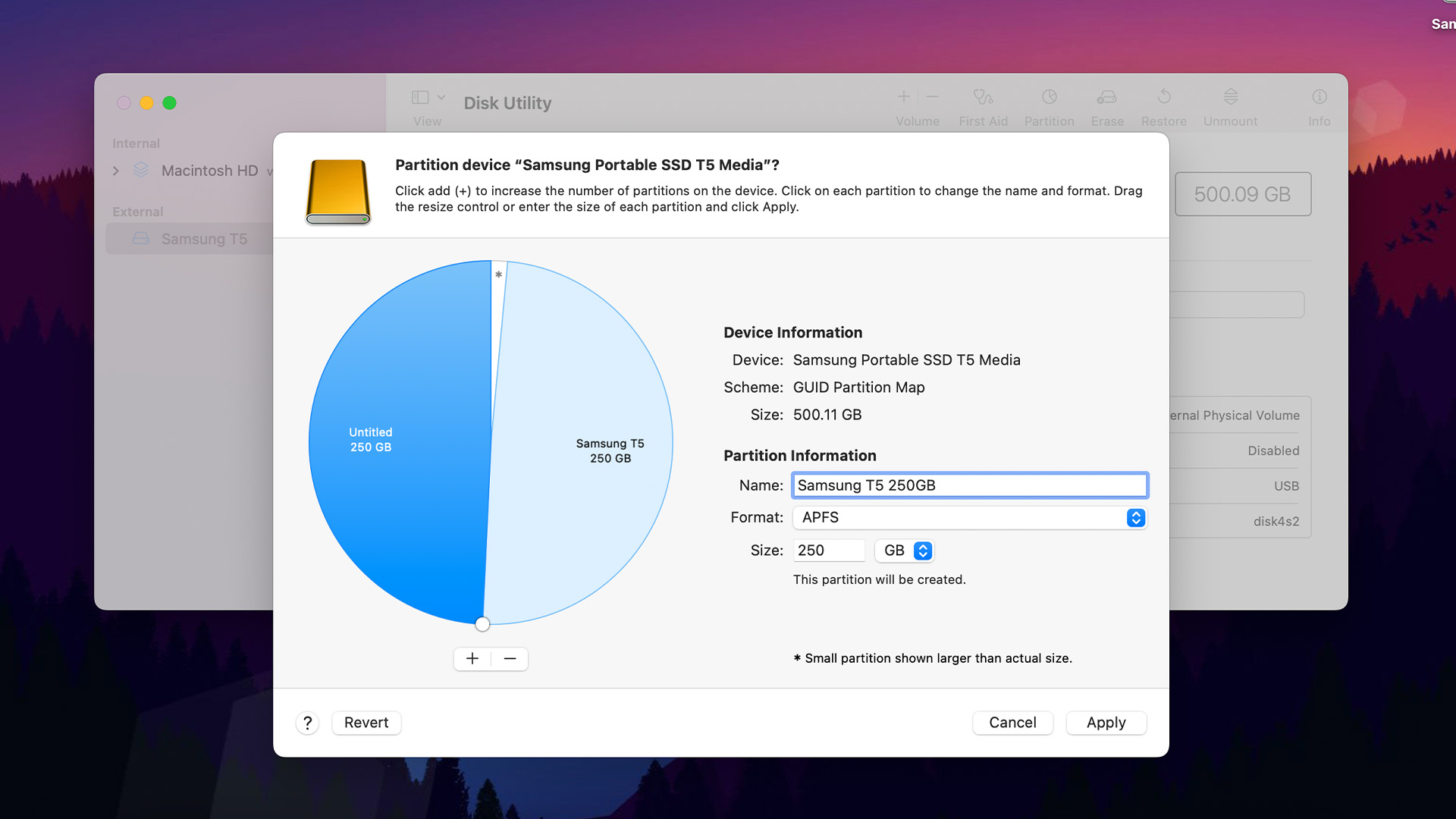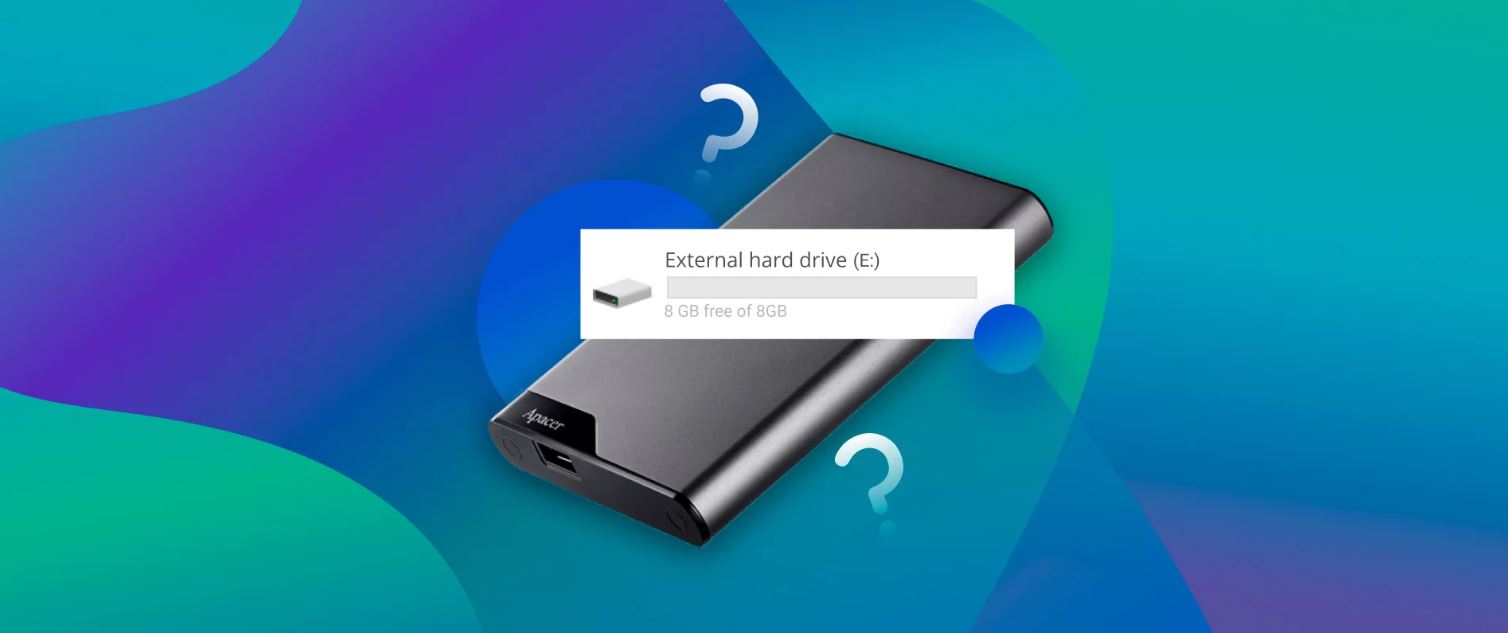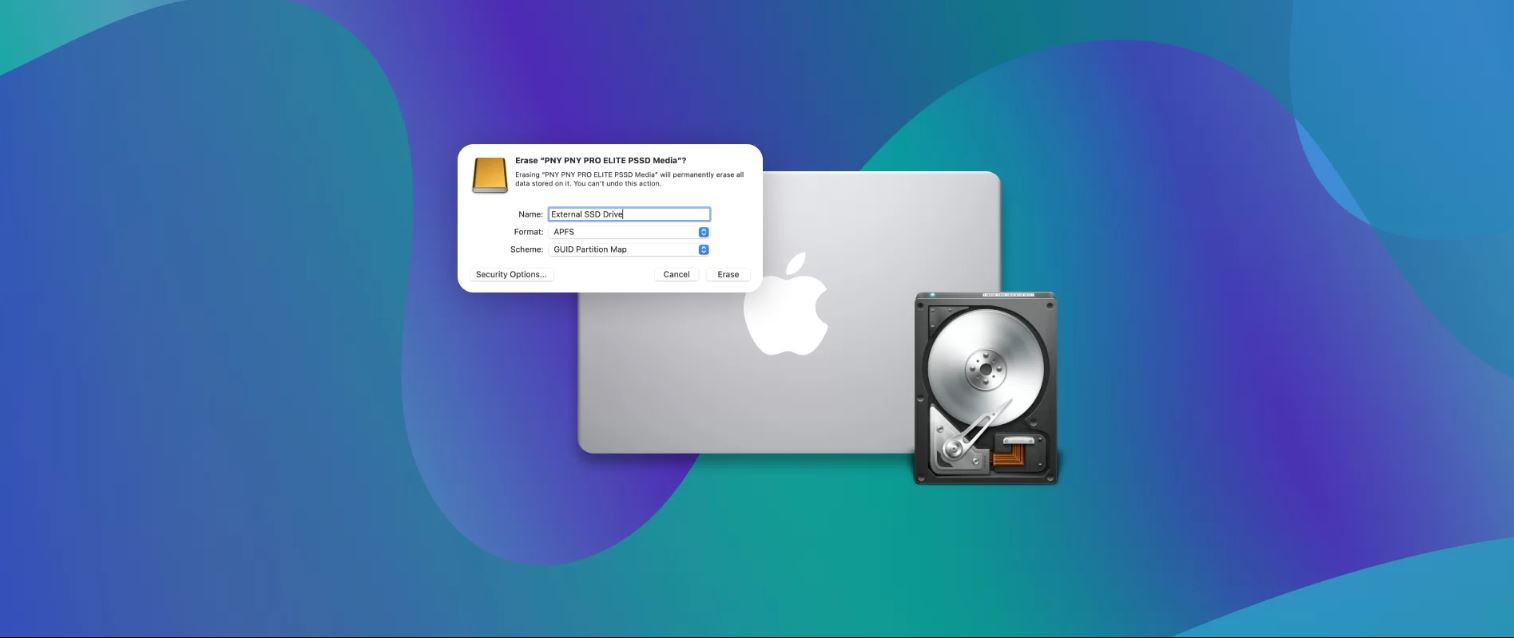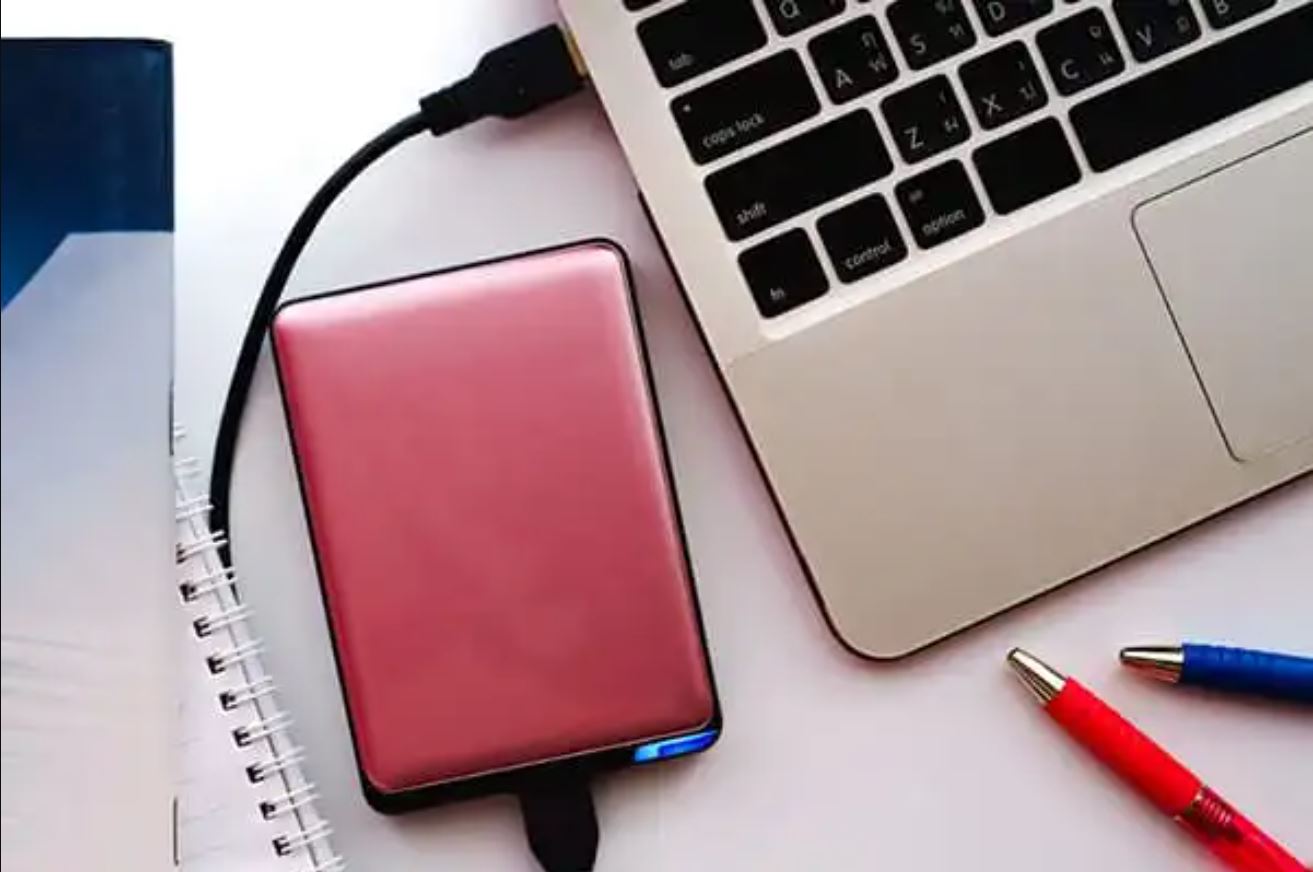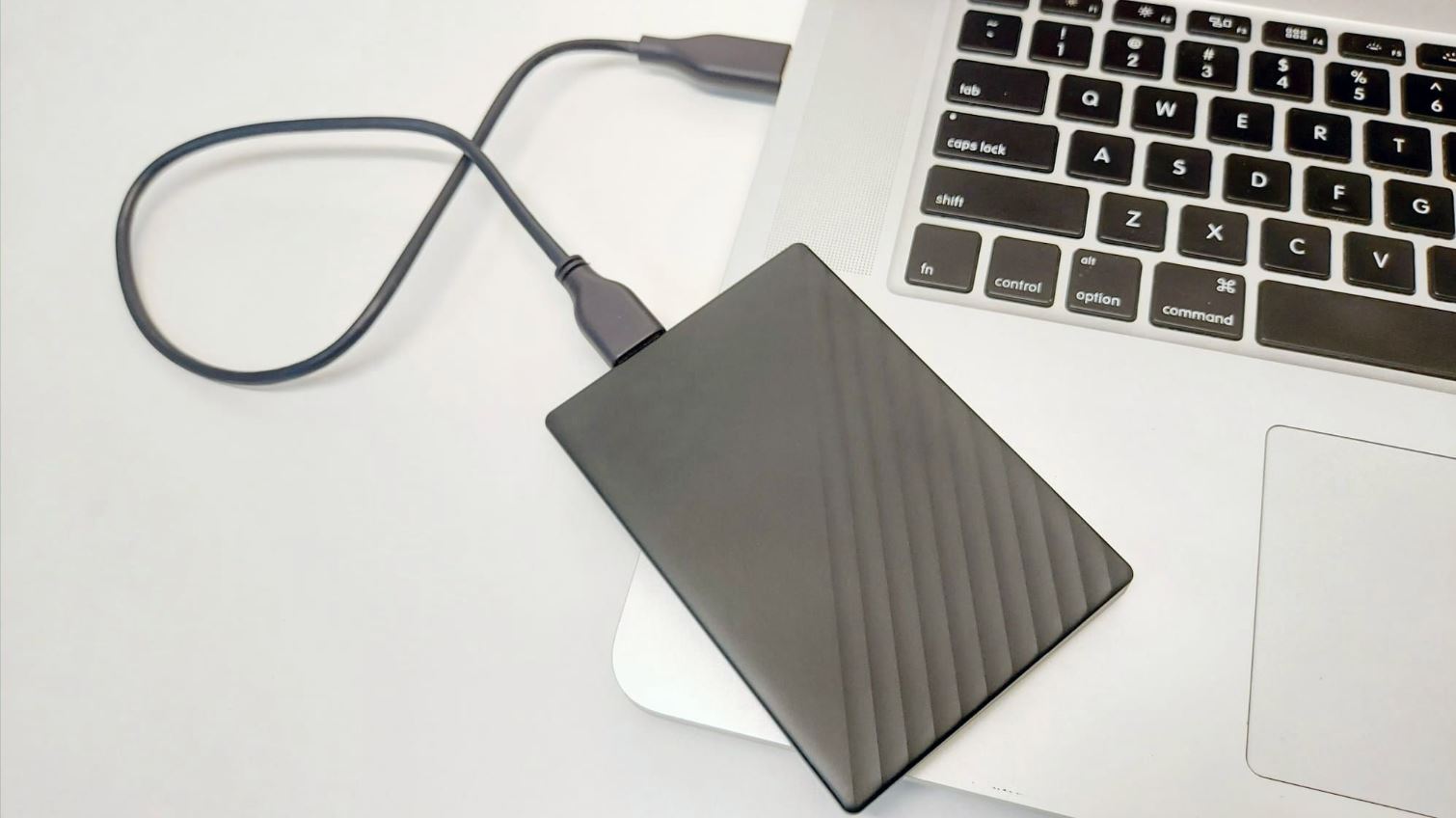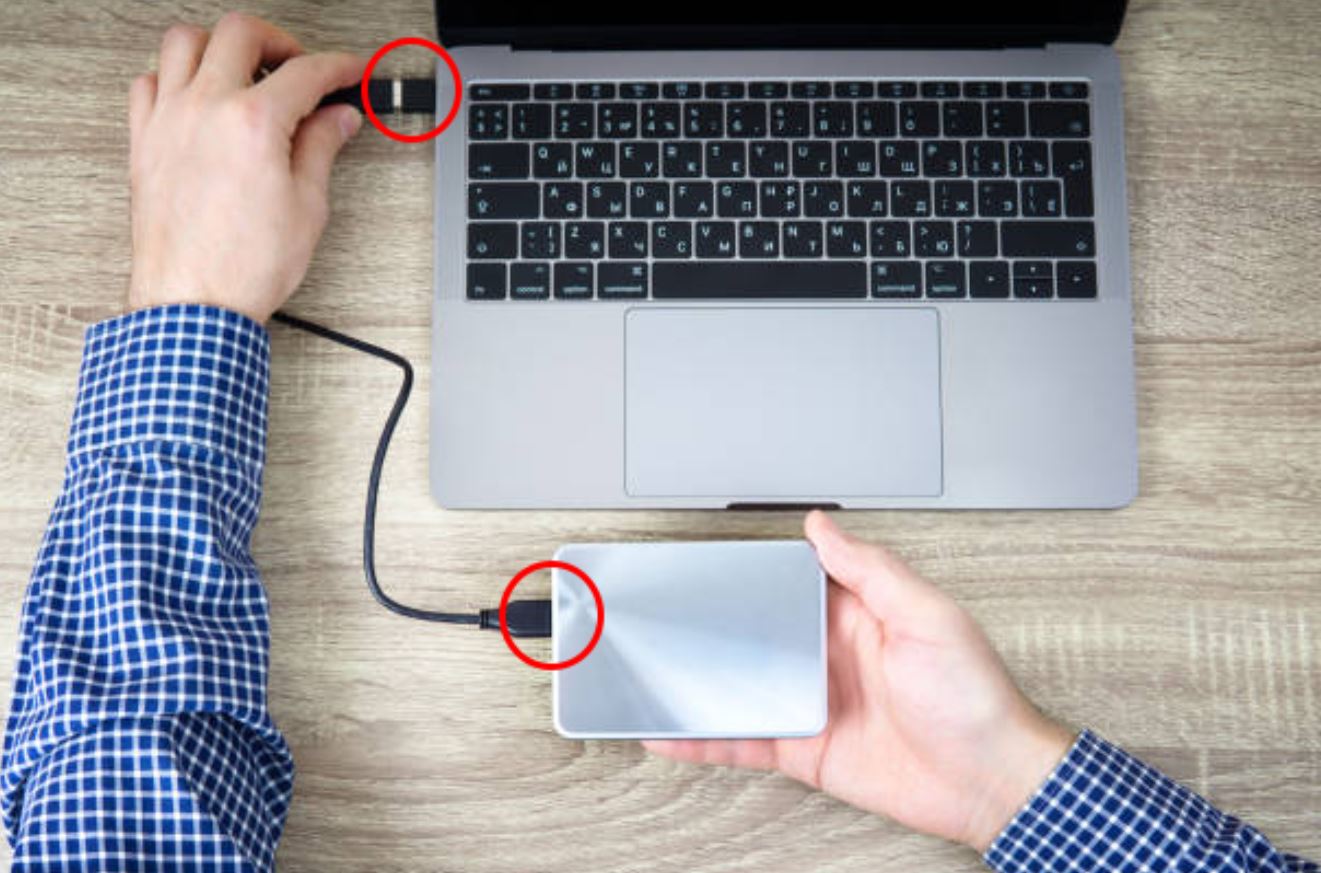Possible Reasons for Not Being Able to Move Files from Mac to External Hard Drive
There can be several reasons why you may encounter difficulties when trying to move files from your Mac to an external hard drive. Understanding these potential issues can help you troubleshoot and resolve the problem. Here are some possible reasons:
- Insufficient File Permissions: One common reason for not being able to move files is the lack of appropriate file permissions. If you don’t have the necessary permissions to modify or write to the external hard drive, you may encounter errors or be unable to complete the file transfer.
- File System Incompatibility: Another possible reason is that the external hard drive is formatted using a file system that is not compatible with macOS. For example, if the drive is formatted in NTFS, which is commonly used on Windows systems, you may encounter limitations when trying to transfer files to your Mac.
- Connectivity Issues: Sometimes, the problem lies with the physical connection between your Mac and the external hard drive. Loose or faulty cables, USB ports, or even the external hard drive enclosure can cause intermittent or complete connection failures, preventing file transfers.
- Corrupted External Hard Drive: If the external hard drive is corrupted or experiencing hardware issues, it may interfere with file transfers. Corrupted sectors, bad blocks, or a failing drive can prevent files from being written or read properly.
- FAT32 Limitations: If the external hard drive is formatted with the FAT32 file system, you may encounter limitations related to file size. FAT32 has a maximum file size limit of 4GB, so if you’re trying to move larger files, the transfer might fail.
- Ownership and Sharing Settings: In some cases, the ownership or sharing settings of the external hard drive might restrict your ability to move files. Check the permissions and sharing settings of both the drive and the specific folders or files you’re trying to transfer.
- Unmounted External Hard Drive: If the external hard drive is not properly mounted or recognized by your Mac, you won’t be able to move files to it. Check if the drive appears in the Finder’s sidebar or Disk Utility and ensure it’s mounted before attempting to transfer files.
- Damaged Files: If the files you’re trying to move are damaged or corrupted, it can cause errors during the transfer process. Consider checking the integrity of the files and repairing them if necessary.
- Conflict with Third-Party Software: Sometimes, conflicts with third-party software or antivirus programs may interfere with file transfers. Temporarily disabling or adjusting these applications can help troubleshoot the issue.
- File Size Restrictions: Lastly, certain external hard drives or file systems may have limitations on the maximum file size that can be transferred. If you’re encountering errors when moving specific files, check if they exceed any size restrictions.
By understanding and troubleshooting these potential reasons, you can overcome the challenges of moving files from your Mac to an external hard drive. Keep in mind that the specific solution may vary depending on the underlying cause, so it’s important to diagnose and address the issue accordingly.
Insufficient File Permissions
One of the common reasons why you may encounter difficulties when trying to move files from your Mac to an external hard drive is insufficient file permissions. File permissions determine who can access, modify, or delete files on a particular storage device.
When you connect an external hard drive to your Mac, it may have different default permissions set, which can restrict your ability to write or modify files. As a result, you may receive error messages or find that you are unable to complete the file transfer.
To check and modify file permissions for the external hard drive, follow these steps:
- Connect the external hard drive to your Mac.
- Open the Finder and locate the external hard drive in the sidebar under “Devices” or on the desktop.
- Right-click (or Control-click) on the external hard drive icon and select “Get Info” from the drop-down menu.
- In the Info window that appears, scroll down to the “Sharing & Permissions” section.
- If necessary, click the lock icon at the bottom right to make changes. You might be prompted to enter your administrator password.
- Review the list of users and their corresponding permissions. Ensure that your user account has either “Read & Write” or “Read Only” access.
- If your user account does not have sufficient permissions, click the “+” button to add your account to the list and adjust the permissions accordingly.
- Click the gear icon at the bottom and select “Apply to enclosed items” to apply the changes to all files and folders within the external hard drive.
Once you have adjusted the file permissions, try moving the files again to see if the issue has been resolved. If you still encounter problems, you may need to consider checking the permissions for specific files or folders within the external hard drive.
It is worth noting that changing file permissions should be done with caution, as it can affect the security and integrity of your data. Make sure you understand the implications of modifying permissions and only make necessary changes to resolve the file transfer issues.
File System Incompatibility
Another possible reason for encountering difficulties when moving files from your Mac to an external hard drive is file system incompatibility. Different operating systems use different file systems to organize and manage data. Mac computers typically use the HFS+ (Mac OS Extended) or the newer APFS (Apple File System) file systems, while Windows computers often use NTFS (New Technology File System) or FAT32 (File Allocation Table).
If the external hard drive you’re trying to transfer files to is formatted with a file system that is not compatible with macOS, you may encounter limitations or errors. For example, if the external hard drive is formatted with NTFS, macOS can read files from it, but it has limited ability to write files to it natively. On the other hand, FAT32 has a maximum file size limit of 4GB, which means you won’t be able to transfer files larger than that to a FAT32-formatted drive.
To check the file system of your external hard drive on macOS, follow these steps:
- Connect the external hard drive to your Mac.
- Open the Finder and locate the external hard drive in the sidebar under “Devices” or on the desktop.
- Right-click (or Control-click) on the external hard drive icon and select “Get Info” from the drop-down menu.
- In the Info window that appears, scroll down to the “General” section.
- Look for the “Format” or “File System” field to determine the file system.
If you find that the external hard drive has an incompatible file system, there are a few possible solutions:
- Format the Drive: You can choose to reformat the external hard drive to a file system that is compatible with both macOS and the other operating system you need to use it with. Be aware that formatting the drive will erase all existing data, so make sure to back up any important files before proceeding.
- Use Third-Party Software: There are third-party software solutions available that enable macOS to have full read and write access to NTFS-formatted drives. These tools typically require installation and may come with a cost.
- Split Large Files: If you are unable to transfer large files due to the file size limitations of FAT32, consider splitting the files into smaller parts and then transferring them individually.
By considering the file system compatibility and taking appropriate actions, you can ensure smoother file transfers between your Mac and external hard drive.
Connectivity Issues
Connectivity issues can be a common obstacle when trying to move files from your Mac to an external hard drive. These issues can manifest in various ways, including intermittent connection failures or the complete inability to establish a stable connection between your Mac and the external hard drive.
Here are some potential causes and troubleshooting steps for connectivity issues:
- Check the Cables: Ensure that the cables connecting your Mac and the external hard drive are securely plugged in on both ends. Sometimes, a loose or faulty cable can interrupt the connection and lead to file transfer issues.
- Try Different USB Ports: If you’re using a USB connection for your external hard drive, try connecting it to a different USB port on your Mac. It’s possible that the USB port you were using before is experiencing problems.
- Use a Different Cable or Adapter: If you have access to alternate cables or adapters, try using them to connect your Mac and the external hard drive. A faulty or incompatible cable or adapter can cause connectivity problems.
- Clean the USB Ports: Over time, dust and debris can accumulate in the USB ports of your Mac, leading to poor contacts and unreliable connections. Use a can of compressed air or a soft brush to clean the USB ports gently.
- Restart your Mac and the External Hard Drive: Sometimes, a simple restart can resolve connectivity issues. Power off your Mac, unplug the external hard drive, wait for a few seconds, then reconnect and power on both devices.
- Update macOS: Ensure that your Mac is running the latest version of macOS and has all available updates installed. Sometimes, compatibility issues between the operating system and external devices can be resolved through updates.
- Check for Firmware Updates: Visit the manufacturer’s website for your external hard drive and check if there are any firmware updates available. Applying firmware updates can address any known connectivity issues.
- Test on Another Computer: If possible, connect the external hard drive to another computer to see if the connectivity issues persist. This can help determine if the problem lies with your Mac or the external hard drive itself.
- Consult Technical Support: If none of the above steps resolve the connectivity issues, consider reaching out to the manufacturer’s technical support for further assistance. They may have specific recommendations or solutions tailored to your device.
By troubleshooting connectivity issues using these steps, you can resolve the problem and establish a stable connection between your Mac and the external hard drive, allowing you to successfully move your files.
Corrupted External Hard Drive
A corrupted external hard drive can be a frustrating hurdle when attempting to move files from your Mac. Corruption can occur due to various factors, such as sudden power loss, improper ejection, physical damage, or software malfunctions.
Here are some steps you can take to troubleshoot and address a corrupted external hard drive:
- Check for Physical Damage: Examine the external hard drive for any visible physical damage, such as dents, scratches, or loose connections. If you notice any issues, it may be necessary to consult a professional or contact the manufacturer for further assistance.
- Try a Different USB Cable or Port: Sometimes, a faulty USB cable or port can cause issues and make the external hard drive appear corrupted. Test the drive with a different cable or port to rule out this possibility.
- Use Disk Utility: On your Mac, open Disk Utility, which can be found in the Utilities folder within the Applications folder. Under the “External” section, locate your external hard drive and select the “First Aid” option. This will attempt to repair any errors or corruptions on the drive.
- Use Data Recovery Software: If Disk Utility fails to fix the corruption, you may need to resort to data recovery software. There are third-party applications available that can help recover data from a corrupted external hard drive. Make sure to choose a reputable software and follow the instructions carefully.
- Format the Drive: In severe cases of corruption, you may need to format the external hard drive. Keep in mind that formatting will erase all data on the drive, so make sure to back up any important files beforehand. After formatting, you can attempt to move files to the drive again.
- Consult Professional Data Recovery Services: If none of the above methods work and the data on the external hard drive is crucial, it’s advisable to seek professional data recovery services. These experts have specialized tools and expertise to recover data from severely corrupted drives.
Remember to always take precautions to prevent external hard drive corruption. Safely eject the drive from your Mac using the “Eject” option in Finder before disconnecting it. Avoid sudden power cuts while the drive is in use, and consider keeping backups of important files to minimize potential data loss.
Dealing with a corrupted external hard drive can be challenging, but by following these steps, you can increase the chances of recovering your files or restoring the drive to working condition.
FAT32 Limitations
FAT32, short for File Allocation Table 32, is a commonly used file system that has been around for years. While FAT32 offers compatibility across different operating systems, it also comes with certain limitations that can hinder your ability to move files from your Mac to an external hard drive formatted with this file system.
One of the main limitations of FAT32 is its maximum file size limit, which is set at 4GB. This means that you won’t be able to transfer files larger than 4GB to an external hard drive formatted with FAT32.
While many files fall within this limit, larger files such as high-definition videos, large software installations, or disk images may exceed the 4GB threshold, resulting in failed transfers or incomplete copying.
If you’re facing file size limitations with FAT32, here are a few potential solutions:
- Split Large Files: If you encounter a large file that exceeds the FAT32 file size limit, consider splitting the file into smaller, manageable parts using file compression software or archive utilities. After splitting the file, you can transfer each part separately to the external hard drive and then reassemble them when needed.
- Format to a Different File System: If you frequently work with large files and find the FAT32 file size limitation restrictive, you can consider reformatting the external hard drive to a more suitable file system. macOS supports various file systems, including HFS+, APFS, and exFAT, which offer higher file size limits and improved compatibility.
- Convert to exFAT: If compatibility with both macOS and Windows is important to you, you can choose to reformat the external hard drive with the exFAT file system. exFAT is supported by both operating systems and does not have the same file size limitations as FAT32, making it a suitable choice for transferring larger files.
Before reformatting the external hard drive, it is crucial to note that reformatting erases all existing data on the drive. Be sure to create a backup of any important files before proceeding.
Consider the types of files you work with and the devices you intend to use the external hard drive with when making a decision about the file system. Assess your needs in terms of file size requirements, compatibility, and transferring files between different operating systems.
Understanding the limitations of FAT32 and exploring alternative solutions will help you overcome the restrictions and allow for smoother file transfers to your external hard drive.
Ownership and Sharing Settings
Ownership and sharing settings can impact your ability to move files from your Mac to an external hard drive. These settings control the access and permissions granted to different users, including yourself, on the external hard drive.
If you encounter issues when transferring files, it’s worth checking the ownership and sharing settings of both the external hard drive and the specific files or folders you’re attempting to move. Here’s what you can do:
- Check Sharing Settings: Right-click (or Control-click) on the external hard drive icon and select “Get Info” from the drop-down menu. In the Info window that appears, look for the “Sharing & Permissions” section. Ensure that your user account has the necessary permissions to read and write to the drive. If not, click the lock icon, enter your administrator password, and make the required adjustments.
- Adjust Ownership Settings: If you’re encountering permission issues with specific files or folders on the external hard drive, you may need to change the ownership settings. Right-click (or Control-click) on the file or folder, select “Get Info,” and navigate to the “Sharing & Permissions” section. Click the lock icon, enter your admin password, and then use the “+” button to add your user account and assign it the appropriate level of access.
- Consider Group Ownership: If you’re sharing the external hard drive with multiple users, you can assign group ownership instead of individual ownership. This simplifies the management of permissions and ensures consistency across multiple users.
- Use a Compatible File System: Some file systems, such as NTFS, have more advanced ownership and permission settings compared to others like FAT32. Depending on your needs, it may be worth considering formatting the external hard drive with a file system that offers more flexibility and granularity in terms of ownership and sharing.
- Use Disk Utility to Repair Permissions: If you suspect that the ownership and sharing settings are corrupted, you can use Disk Utility to repair permissions. Open Disk Utility, select the external hard drive, and click on the “First Aid” option. This will scan and fix any permission-related issues.
By verifying and adjusting ownership and sharing settings, you can ensure that you have the necessary access and permissions to move files from your Mac to the external hard drive. Keep in mind that modifying permissions should be done with caution, as it can affect security and data integrity. It’s always a good practice to double-check the changes before proceeding with file transfers.
Unmounted External Hard Drive
If you are experiencing difficulties moving files from your Mac to an external hard drive, it’s possible that the external hard drive is not properly mounted. When a drive is unmounted, it means that it is not recognized or accessible by your Mac, which can prevent you from transferring files.
Here are a few steps to check if the external hard drive is unmounted and what you can do to resolve the issue:
- Check in Finder: Open a new Finder window and look for the external hard drive under the “Devices” section in the sidebar or on the desktop. If the drive does not appear, it is likely unmounted.
- Use Disk Utility: Launch Disk Utility, which can be found in the Utilities folder within the Applications folder. In Disk Utility, look for the external hard drive in the list of available drives on the left-hand side. If it is unmounted, it may show up as grayed out or with an exclamation mark next to it.
- Mount the Drive: If the external hard drive is unmounted, you can attempt to mount it manually. In Disk Utility, select the drive, then click on the “Mount” button in the toolbar. Alternatively, you can right-click (or Control-click) on the drive and select “Mount” from the contextual menu.
- Reset the SMC and NVRAM: Sometimes, resetting the System Management Controller (SMC) and the non-volatile random-access memory (NVRAM) can resolve issues with unmounted drives. Consult Apple’s support documentation or the user manual for your specific Mac model to learn how to perform these resets.
- Check the Power Source and Cable: Ensure that the external hard drive is receiving power and that the cable connecting it to your Mac is not damaged or loose. Try a different power outlet and cable if possible.
- Reboot your Mac: Sometimes, a simple restart can resolve unmounting issues. Power off your Mac, disconnect the external hard drive, wait for a few seconds, then start your Mac and reconnect the drive.
- Use a Different USB Port or Adapter: If you are using a USB connection, try plugging the external hard drive into a different USB port or using a different USB adapter to rule out any port or adapter-related issues.
- Test on Another Computer: To determine if the unmounting issue is specific to your Mac or the external hard drive itself, try connecting the drive to another computer. If it mounts successfully on another system, the problem may lie with your Mac.
- Check for Disk Errors: If the drive mounts but you still encounter issues with transferring files, it’s worth running a disk check for errors using Disk Utility. Select the drive and click on the “First Aid” or “Repair Disk” button to initiate the scan and repair process.
By following these steps, you can troubleshoot and resolve unmounting issues with your external hard drive, allowing you to move files seamlessly between your Mac and the drive.
Damaged Files
If you’re encountering problems moving files from your Mac to an external hard drive, the issue might be related to damaged files. Damaged files can occur due to various reasons, such as hardware malfunctions, file system errors, software glitches, or incomplete transfers.
Here are some steps you can take to address the issue of damaged files:
- Check for File Integrity: Before transferring files, verify that they are not already damaged on your Mac. Attempt to open and play the files to ensure they are working properly. Use file repair or recovery tools specific to the file type if you suspect any corruption.
- Use Disk Utility: Run a disk check using Disk Utility on your Mac to scan for file system errors or corruptions. Open Disk Utility, select the external hard drive, and click on the “First Aid” or “Repair Disk” button to initiate the scanning and repair process.
- Use Data Recovery Software: If the files on your Mac are damaged and you do not have backups, consider utilizing data recovery software. These applications can attempt to repair or recover files that have become inaccessible or corrupted.
- Transfer Files in Smaller Batches: If you are moving a large number of files, try transferring them in smaller batches rather than all at once. This reduces the chance of errors occurring during the transfer process.
- Use Compression or Archiving: If a specific file is consistently causing issues, try compressing or archiving it using software like ZIP or RAR. This can help protect the file during the transfer and potentially resolve any damage-related problems.
- Use File Recovery Services: If the files are critically important and traditional repair methods haven’t been successful, consider utilizing file recovery services. These services employ specialized tools and techniques to recover data from damaged or corrupted files.
- Reacquire or Redownload Files: If you have backups or the option to reacquire or redownload the files, it might be the simplest solution. This ensures that you are working with undamaged versions of the files.
Remember to regularly backup your files to prevent data loss and minimize the impact of damaged files. By implementing these steps, you can increase the chances of successfully transferring files from your Mac to the external hard drive, even if the files are damaged.
Conflict with Third-Party Software
When you encounter difficulties moving files from your Mac to an external hard drive, it’s possible that there may be a conflict with third-party software installed on your system. Certain applications, such as antivirus programs, disk utilities, or file management tools, can interfere with the file transfer process and cause errors or interruptions.
Here are some steps you can take to identify and resolve conflicts with third-party software:
- Update or Disable Third-Party Software: Ensure that all third-party software installed on your Mac is up to date. Outdated software can sometimes cause compatibility issues with macOS and interfere with file transfers. If you suspect a specific application may be causing the conflict, try disabling it temporarily to see if the file transfer works without any issues.
- Quit Background Processes: Certain utilities or scheduled processes running in the background can potentially interfere with file transfers. Quitting unnecessary applications or processes can help minimize conflicts and free up system resources for the file transfer.
- Create a Test User Account: Create a new user account on your Mac and try transferring the files from the external hard drive using this account. If the issue does not occur in the test user account, it indicates that the problem may be specific to your main user account and potentially related to third-party software installed under that account.
- Isolate the Cause: If you suspect a particular application or utility is causing conflicts, try selectively disabling or uninstalling it to see if that resolves the issue with the file transfer process. You can then reinstall or enable the software and seek further updates or solutions from the software’s developer.
- Check for Software Updates: Visit the websites of the third-party software you have installed and check for any available updates or patches. Developers often release updates to address compatibility issues and improve overall system performance.
- Contact Third-Party Support: If you have identified a specific third-party software as the cause of the conflict and none of the above steps resolve the issue, reach out to the software’s developer for assistance. Their support team may have additional recommendations or specific troubleshooting steps tailored to their software.
Identifying and resolving conflicts with third-party software can often resolve issues with file transfers to an external hard drive. By following the steps outlined above and ensuring your software is up to date, you can minimize the likelihood of conflicts interfering with your file transfer process.
File Size Restrictions
File size restrictions can be a limiting factor when attempting to move files from your Mac to an external hard drive. Different file systems and storage devices have specific limitations on the maximum file size they can handle. Exceeding these limitations can result in errors or the inability to transfer certain files.
To address file size restrictions when moving files to an external hard drive, consider the following:
- Check File System Limitations: Determine the file system of the external hard drive and understand its maximum file size limit. For example, FAT32 has a maximum file size limit of 4GB, while other file systems like exFAT or NTFS can handle larger file sizes.
- Compress Large Files: If you have files that exceed the file size limit of the external hard drive, consider compressing them into a smaller archive format like ZIP or RAR. This can reduce the file size while preserving the content.
- Split Large Files: If the files you want to transfer are too large to fit within the file size limit of the external hard drive’s file system, you can split them into smaller segments using file splitting tools. Once split, you can transfer the individual segments and then join them together on the external hard drive if needed.
- Choose a Compatible File System: If the file size limitations of the current file system are too restrictive for your needs, you may consider reformatting the external hard drive to a different file system that can accommodate larger file sizes. Keep in mind that reformatting will erase all data on the drive, so make sure to back up your files first.
- Consider Cloud Storage or Alternate Storage Solutions: If you frequently deal with large files and find them impractical to transfer to an external hard drive due to file size limitations, exploring cloud storage options or alternative storage solutions might be beneficial. These solutions often offer higher storage capacities and the flexibility to handle larger file sizes.
Understanding the file size limitations of your external hard drive’s file system and employing the appropriate strategies can help you overcome restrictions when transferring files. Whether you compress, split, reformat, or seek alternative storage options, you can find a solution that allows you to move and store your files efficiently.







